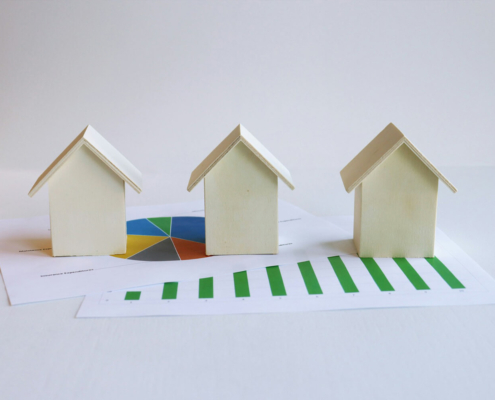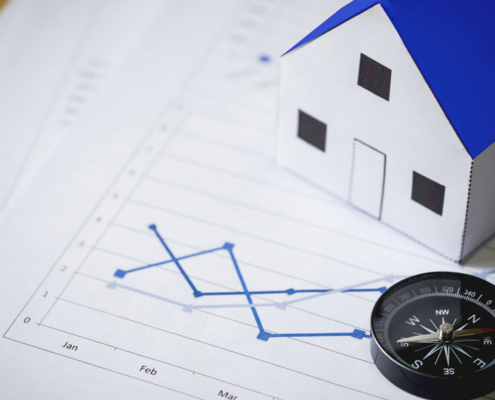Talk to an Expert!
Want to to learn more or see how if applies to your project? Let’s Connect!
The Economics of Owning a Rental Property for 20 Years: Monthly Income & Appreciation Explained
Investing in rental property is one of the most powerful ways to build long-term wealth. While the idea of generating passive income from tenants is attractive, the real magic happens over time—when you combine monthly cash flow with property appreciation and mortgage payoff. In this post, we’ll break down the economics of owning a rental property for 20 years, factoring in monthly income, expenses, appreciation at 3% annually, and overall return on investment.
Why a 20-Year Investment Horizon Matters
Real estate investing is best viewed through a long-term lens. Unlike stocks or crypto, rental properties appreciate steadily, offer consistent income, and come with tax benefits that can significantly enhance your returns.
Holding a property for 20 years allows time for:
- Mortgage principal to be paid down (or off entirely)
- Property value to increase
- Rents to rise with inflation
- Tax advantages like depreciation to compound
Let’s walk through a detailed financial scenario to understand what 20 years of rental property ownership can look like.
Rental Property Investment Assumptions
To create a realistic case study, we’ll use the following assumptions:
| Metric | Value |
|---|---|
| Purchase Price | $300,000 |
| Down Payment (20%) | $60,000 |
| Loan Amount | $240,000 |
| Interest Rate | 6% |
| Loan Term | 30 years |
| Monthly Rent (Year 1) | $2,000 |
| Annual Rent Growth | 2.5% |
| Property Appreciation | 3% annually |
| Operating Expenses (Annual) | 35% of rent |
| Property Management Fee | Included in expenses |
| Property Taxes & Insurance | Included in expenses |
We’ll assume the investor holds the property for 20 years and sells it at the end of the period.
1. Monthly Cash Flow Over 20 Years
Cash flow is the net income from your rental after paying all expenses and the mortgage. Let’s look at how this grows over time.
Year 1 Cash Flow:
- Gross Monthly Rent: $2,000
- Annual Rent: $24,000
- Operating Expenses (35%): $8,400
- Net Operating Income (NOI): $15,600
- Annual Mortgage Payment: $17,276
(30-yr loan at 6%) - Annual Cash Flow: -$1,676
(slightly negative due to high initial mortgage payment)
Year 10 Cash Flow (with 2.5% rent growth):
- Monthly Rent: $2,560
- Annual Rent: $30,720
- Operating Expenses: $10,752
- NOI: $19,968
- Mortgage Payment (same): $17,276
- Cash Flow: $2,692 annually / $224 per month
Year 20 Cash Flow:
- Monthly Rent: $3,280
- Annual Rent: $39,360
- Operating Expenses: $13,776
- NOI: $25,584
- Mortgage Payment: $17,276
- Cash Flow: $8,308 annually / $692 per month
Total Cash Flow Over 20 Years (approx.):
~$63,000
(based on gradually increasing cash flow over time)
2. Property Appreciation Over 20 Years
Now let’s look at the value of the property after 20 years of 3% annual appreciation.
Appreciation Formula:
Future Value = Present Value × (1 + Appreciation Rate)^Years
$300,000 × (1.03)^20 = $541,833
Your property is now worth $541,833 after 20 years.
3. Loan Paydown and Equity Buildup
Over 20 years, you’ll also be paying off the loan principal. Using a standard amortization schedule, the mortgage balance after 20 years will be approximately:
- Remaining Loan Balance: $97,000
- Equity from Loan Paydown: $240,000 – $97,000 = $143,000
Add this to the equity gained through appreciation:
- Equity from Appreciation: $541,833 – $300,000 = $241,833
- Total Equity Built: $384,833
4. Total Return Breakdown
Here’s how the investment looks after 20 years:
| Category | Amount |
|---|---|
| Property Value | $541,833 |
| Remaining Mortgage | $97,000 |
| Total Equity | $444,833 |
| Total Cash Flow | $63,000 |
| Total Profit | $507,833 |
| Original Investment | $60,000 |
| ROI (Excl. Taxes) | 846% |
That’s an average annualized return of 13.5% over 20 years—without considering tax savings, reinvestment of cash flow, or refinancing benefits.
5. Additional Considerations: Taxes, Depreciation & Recapture
Depreciation:
You can depreciate the structure over 27.5 years, which provides significant tax shelter. For example:
- Depreciable Basis: $270,000 (excluding land)
- Annual Depreciation: $9,818
- Over 20 years: $196,360 in depreciation deductions
This reduces your taxable income significantly, especially in the early years when cash flow is tight.
Depreciation Recapture:
When you sell, the IRS will “recapture” some of this depreciation at a 25% tax rate. But even after paying taxes, the benefits of depreciation are strong during ownership.
6. The Power of Leverage
Leverage amplifies returns. You invested $60,000 (down payment), but your return is based on a $300,000 asset that appreciates over time. This is why even small positive cash flow rentals can outperform other investments over time.
7. What If You Paid in Cash?
If you bought the property with $300,000 cash:
- No mortgage payments
- Cash flow would be over $25,000/year by year 20
- Appreciation is the same: $541,833
- Total ROI would still be strong, but lower overall return on capital (no leverage boost)
Paying $300,000 in cash for a rental property might seem like a safe and simple approach, but it comes with a significant opportunity cost—namely, the lost earnings from not investing that capital elsewhere. If you had instead invested that $300,000 in an asset yielding a 6% annual return, compounded annually, it would grow to approximately $961,000 over 20 years. That’s more than three times your initial investment, and far exceeds the equity gain you’d earn from appreciation alone on a property purchased outright. While paying cash eliminates mortgage interest and improves cash flow, the tradeoff is potentially sacrificing hundreds of thousands in compounded investment growth. For many investors, especially those comfortable with modest leverage, this illustrates why using financing can be a smarter strategy for maximizing long-term wealth.
8. Inflation Protection & Rent Increases
Inflation Protection & Rent Increases Real estate offers a hedge against inflation. As inflation rises, so do rents. In this scenario, rent grew by 2.5% per year, but in high-inflation environments, it could grow even faster. This helps preserve purchasing power and improves long-term income.
9. Passive Income in Retirement
A fully or mostly paid-off rental property can become a reliable income stream in retirement. By year 20, monthly cash flow can exceed $700, providing a steady, inflation-adjusted return even if appreciation slows.
Final Thoughts: Is a 20-Year Hold Worth It?
Absolutely. The numbers show that even with modest rent growth and appreciation, owning a rental property for 20 years can transform a $60,000 investment into over $500,000 in total profit—most of it tax-advantaged.
You earn monthly income, build equity, benefit from appreciation, and take advantage of significant tax breaks. It’s a long game, but one that pays off handsomely.







